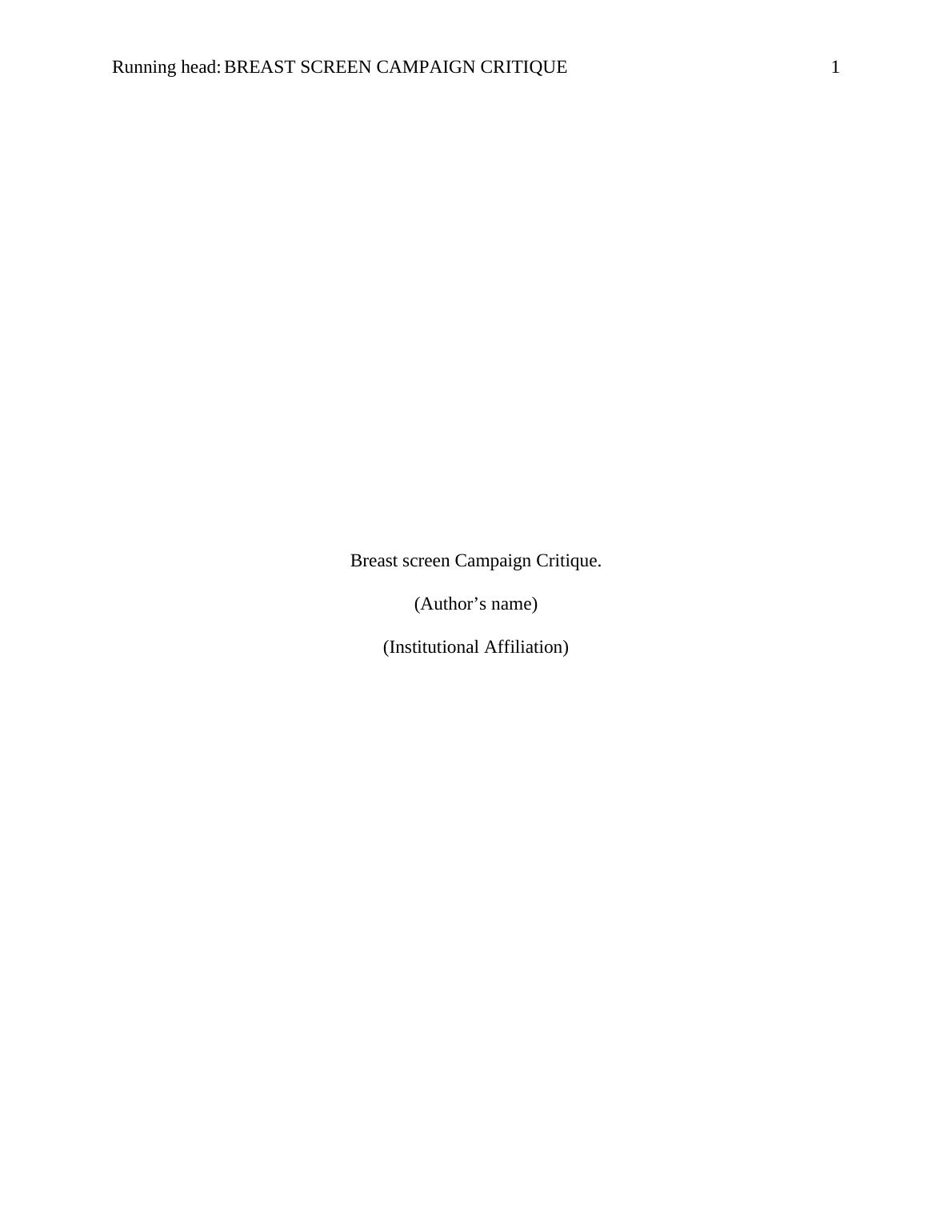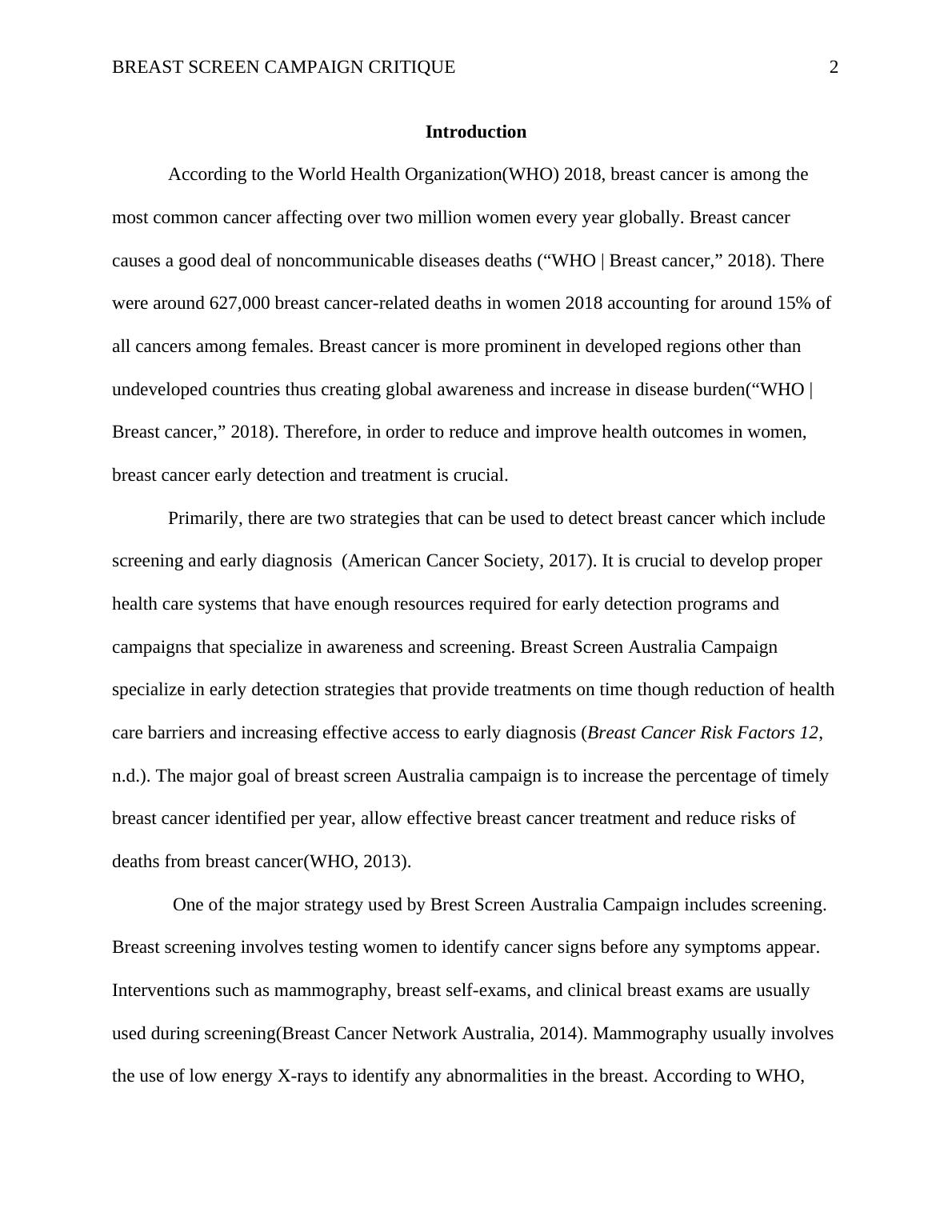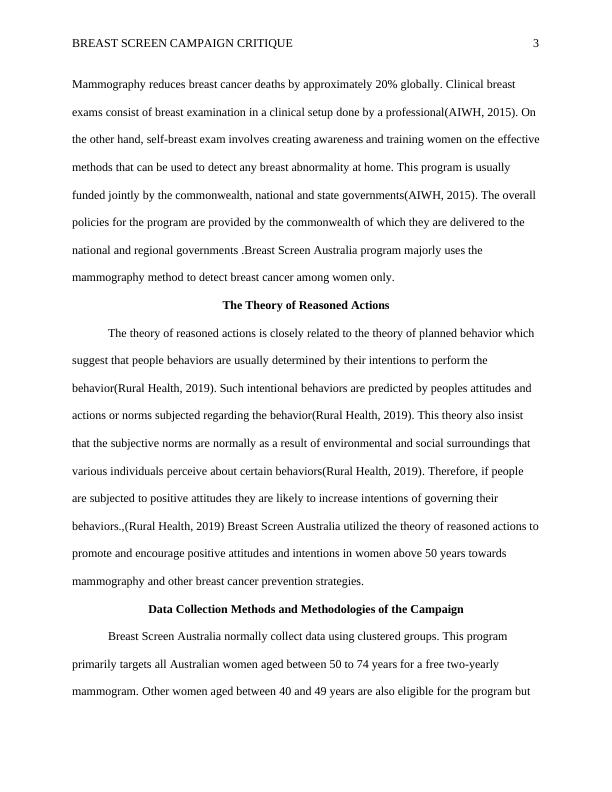Breast Screen Campaign Critique
Critique a health campaign/program in an essay format, discussing its importance, aims, target populations, and components, supported by scientific literature.
11 Pages2996 Words111 Views
Added on 2022-11-30
About This Document
This document provides a critique of the Breast Screen Australia campaign, focusing on its strategies, data collection methods, strengths, and weaknesses. The campaign aims to increase early detection and treatment of breast cancer through screening and awareness programs. The document also discusses the Theory of Reasoned Actions and the program's impact on breast cancer awareness and prevention.
Breast Screen Campaign Critique
Critique a health campaign/program in an essay format, discussing its importance, aims, target populations, and components, supported by scientific literature.
Added on 2022-11-30
ShareRelated Documents
End of preview
Want to access all the pages? Upload your documents or become a member.
NSB 334 | Assessment | Cancer
|17
|4896
|26
Free Breast Screening in Australia
|14
|3300
|15
Strategic Decision Making in Health Case Study 2022
|14
|4152
|23
The case of Harold Shipman True Crime Nightmare
|13
|3834
|18
Breast Cancer Prevention Programs in Australia
|4
|778
|297
Breast Screening Campaign in Australia: Aim, Outcome, and Success
|11
|3088
|93




